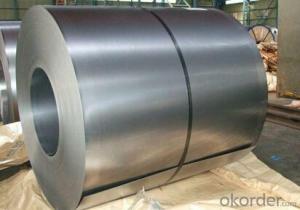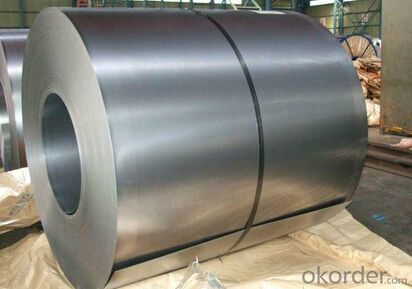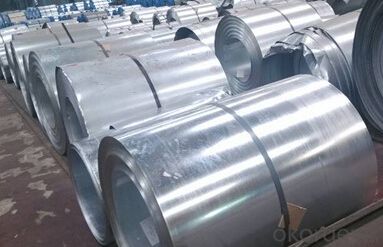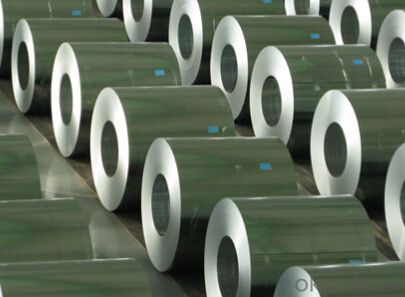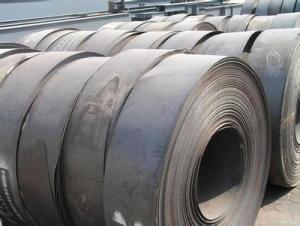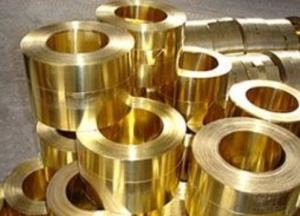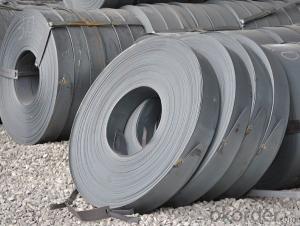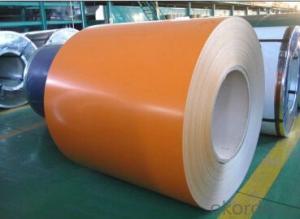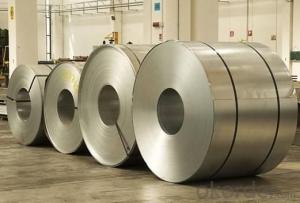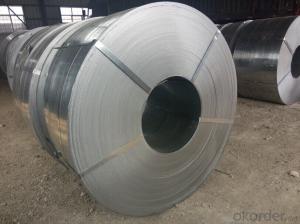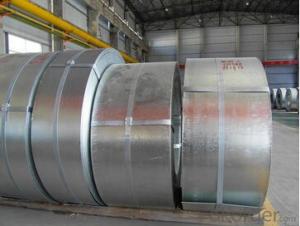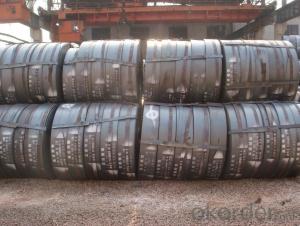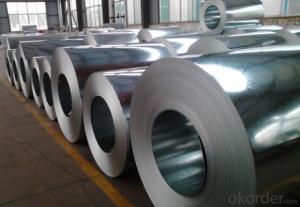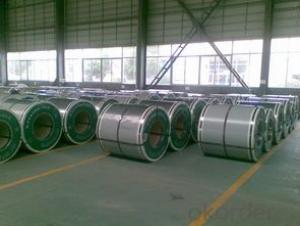Hot-dip Zinc Coating Steel Building Roof Walls Steel Coil ASTM 615-009
- Loading Port:
- Tianjin
- Payment Terms:
- TT OR LC
- Min Order Qty:
- 9999 kg/m²
- Supply Capability:
- 11 kg/m²/month
OKorder Service Pledge
OKorder Financial Service
You Might Also Like
1.Structure of Hot-Dip Galvanized Steel Sheet Description:
Hot-dip galvanized steel coils are available with a pure zinc coating through the hot-dip galvanizing process. It offers the economy, strength and formability of steel combined with the corrosion resistance of zinc. The hot-dip process is the process by which steel gets coated in layers of zinc to protect against rust. It is especially useful for countless outdoor and industrial applications. Production of cold formed corrugated sheets and profiles for roofing, cladding, decking, tiles, sandwich walls, rainwater protective systems, air conditioning duct as well as electrical appliances and engineering.tungsten, carbon and so on. Basically, steel is an iron-carbon alloy that does not undergo eutectic reaction. In contrast,cast iron does undergo eutectic reaction, suddenly solidifying into solid phases at exactly the same temperature. Too little carbon content leaves (pure) iron quite soft, ductile, and weak. Carbon contents higher than those of steel make an alloy, commonly called pig iron, that is brittle (not malleable). While iron alloyed with carbon is called carbon steel, alloy steel is steel to which other alloying elements have been intentionally added to modify the characteristics of steel. Common alloying elements include: manganese, nickel, chromium, molybdenum, boron, titanium, vanadium, tungsten, cobalt, and niobium.[1] Additional elements are also important in steel: phosphorus, sulfur, silicon, and traces of oxygen, nitrogen, and copper.
2.Main Features of the Hot-Dip Galvanized Steel Sheet:
• Excellent process capability
• Smooth and flat surface
• Workability, durability
• Excellent anticorrosive property
• High strength
• Good formability
• Good visual effect
3.Hot-Dip Galvanized Steel Sheet Images
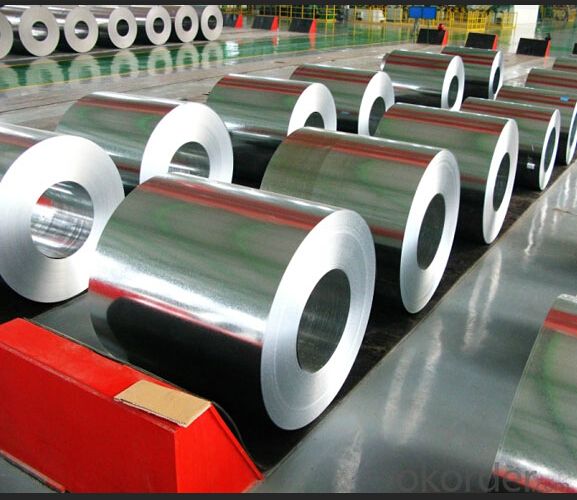
4.Hot-Dip Galvanized Steel Sheet Specification
Standard: ASTM, JIS,EN
Grade: CS, DX51D+Z,SGCC, SS 230~550,S220GD+Z~S550GD+Z, SGC340~SGC570
Thickness: 0.1mm~5mm
Width: max 2000mm
Coil weight:3-12 MT
Coil ID:508/610mm
Surface structure: zero spangle, regular spangle or minimum spangle
Surface treatment: Chromate treatment, Oiled/dry, skinpassed/non-skinpassed
Packing: Standard seaworthy export package
Technology test results:
Processability | Yield strength | Tensile strength | Elongation % | 180°cold-bending |
Common PV | - | 270-500 | - | d=0,intact,no zinc removal |
Mechanical interlocking JY | - | 270-500 | - | d=0,intact,no zinc removal |
Structure JG | >=240 | >=370 | >=18 | d=0,intact,no zinc removal |
Deep drawn SC | - | 270-380 | >=30 | d=0,intact,no zinc removal |
EDDQ SC | - | 270-380 | >=30 | d=0,intact,no zinc removal |
5.FAQ of Hot-Dip Galvanized Steel Sheet
We have organized several common questions for our clients,may help you sincerely:
1.How about your company?
A world class manufacturer & supplier of castings forging in carbon steel and alloy steel,is one of the large-scale professional investment casting production bases in China,consisting of both casting foundry forging and machining factory. Annually more than 8000 tons Precision casting and forging parts are exported to markets in Europe,America and Japan. OEM casting and forging service available according to customer’s requirements.
2.How to guarantee the quality of the products?
We have established the international advanced quality management system,every link from raw material to final product we have strict quality test;We resolutely put an end to unqualified products flowing into the market. At the same time, we will provide necessary follow-up service assurance.
3. How long can we receive the product after purchase?
Usually within thirty working days after receiving buyer’s advance payment or LC. We will arrange the factory manufacturing as soon as possible. The cargo readiness usually takes 15-30 days, but the shipment will depend on the vessel situation.
- Q: Can steel strips be used in the manufacturing of electrical components?
- Yes, steel strips can be used in the manufacturing of electrical components. Steel strips are commonly used as a base material in the production of electrical components such as transformer cores, motor laminations, and electrical connectors. The steel strips provide the necessary strength, durability, and magnetic properties required for these applications.
- Q: How are steel strips used in the manufacturing of escalators?
- Steel strips are used in the manufacturing of escalators to provide essential structural support, as they are strong and durable. These strips are typically used to construct the framework of the escalator, including the steps, handrails, and balustrades, ensuring the overall stability and safety of the escalator system.
- Q: How are steel strips processed for plating?
- Steel strips are typically processed for plating through a series of steps. First, the strips are cleaned to remove any impurities or contaminants. This is followed by surface preparation, which may involve mechanical processes like grinding or sanding to ensure a smooth and even surface. Next, the strips are often treated with chemicals or acid solutions to further clean and activate the surface, promoting better plating adhesion. Finally, the steel strips are immersed in a plating bath where a layer of the desired metal, such as nickel or zinc, is deposited onto the surface through an electrochemical process.
- Q: What is the difference between hot rolling and cold rolling of steel strips?
- The main difference between hot rolling and cold rolling of steel strips lies in the temperature at which the process takes place and the subsequent effects on the material. Hot rolling involves heating the steel strips at extremely high temperatures, typically above the recrystallization temperature of the metal. This softens the steel and makes it more malleable, allowing it to be easily shaped and formed into various products. The heated steel is then passed through a series of rollers to reduce its thickness and achieve the desired dimensions. Hot rolling results in a smoother surface finish and less residual stress in the steel, making it suitable for applications that require a higher strength or ductility. On the other hand, cold rolling is performed at room temperature or slightly below it, without heating the steel strips. This process involves passing the steel through a series of rollers that gradually reduce its thickness. Cold rolling not only refines the grain structure of the steel but also increases its hardness and strength. Additionally, cold rolling improves the surface finish of the steel, making it suitable for applications where a smooth and polished appearance is desired. In summary, hot rolling is carried out at high temperatures to achieve better formability and shape the steel, while cold rolling is performed at room temperature to enhance the mechanical properties and surface finish of the steel. The choice between hot rolling and cold rolling depends on the specific requirements of the end product and the desired characteristics of the steel.
- Q: Are steel strips used in the production of HVAC systems?
- Steel strips are commonly employed in the production of HVAC systems, including heating, ventilation, and air conditioning. These versatile and durable materials are utilized for various components like air ducts, pipes, and support structures. Typically, these steel strips are crafted from galvanized steel, which is coated with a layer of zinc to enhance resistance against corrosion. By utilizing steel strips, the HVAC system is guaranteed to possess strength, durability, and the ability to endure the demands of heating, cooling, and ventilation in diverse environments.
- Q: What are the different edge conditions of steel strips?
- The different edge conditions of steel strips include mill edge, slit edge, deburred edge, rounded edge, and sheared edge.
- Q: How are steel strips used in the railway industry?
- Steel strips have a wide range of uses in the railway industry. One key application is in the production of railway tracks. These strips are shaped into rails that form the track structure. They are typically hot-rolled, providing the necessary strength, durability, and stability. Steel strips are also utilized in the construction of railway bridges and tunnels. They are often used as reinforcement in concrete structures, enhancing their load-bearing capacity and structural integrity. Additionally, steel strips can be used as tie plates to evenly distribute the load and prevent the rail from sinking into the wooden ties. Besides track and infrastructure applications, steel strips are used in manufacturing various railway components. These include rail clips, fishplates, and fasteners. Rail clips secure the rails to the sleepers, ensuring proper alignment and preventing lateral movement. Fishplates connect two rail sections seamlessly, allowing for a smooth transition. Fasteners, such as bolts and nuts, maintain the stability and safety of the track. Furthermore, steel strips are essential in the fabrication of rolling stock components. They form the structural framework of railway wagons and locomotives, providing strength and rigidity. Steel strips are also utilized in the production of interior and exterior parts like doors, panels, and frames. In conclusion, steel strips are vital in the railway industry as they offer the necessary strength, durability, and stability to tracks, infrastructure, and rolling stock components. Their versatility and excellent mechanical properties make them an essential material for ensuring the safe and efficient operation of railways.
- Q: What are the common thickness tolerances for steel strips?
- The specific application and industry standards dictate the variation in thickness tolerances for steel strips. Generally, steel strips have thickness tolerances ranging from +/- 0.005 inches to +/- 0.020 inches, ensuring compliance with required specifications and consistent performance across different applications. Industries like automotive, aerospace, and construction, where precision and quality are paramount, often demand narrower thickness tolerances. In such cases, tolerances can be as tight as +/- 0.001 inches or even less. It should be noted that factors such as the manufacturing process, steel type, and strip's intended use can influence the specific thickness tolerances for steel strips. Thus, referring to relevant industry standards and specifications is vital for determining precise thickness tolerances for a given application.
- Q: What are the alternatives to steel strips in specific applications?
- There are several alternatives to steel strips that can be used in specific applications depending on the requirements and constraints. Some of these alternatives include: 1. Aluminum strips: Aluminum strips offer a lightweight and corrosion-resistant alternative to steel. They are commonly used in industries such as aerospace, automotive, and construction, where weight reduction and durability are key factors. 2. Copper strips: Copper strips are known for their excellent electrical conductivity and thermal properties. They are widely used in electrical and electronic applications, such as in transformers, motors, and electrical wiring. 3. Composite strips: Composite materials, such as carbon fiber reinforced polymers (CFRP) or fiberglass, can be used as alternatives to steel strips in applications where high strength, stiffness, and corrosion resistance are required. These materials are commonly used in the aerospace and marine industries for their favorable weight-to-strength ratio. 4. Plastic or polymer strips: Plastic or polymer strips, such as polyethylene or polypropylene, are often used as alternatives to steel in applications where chemical resistance, flexibility, or low friction properties are important. They find applications in industries like packaging, automotive, and healthcare. 5. Wood strips: Wood strips are a traditional alternative to steel in various applications, particularly in construction and furniture industries. Wood offers natural beauty, ease of working, and sustainability compared to steel. It is important to consider the specific requirements of the application, such as mechanical properties, weight, corrosion resistance, and cost, before selecting an alternative to steel strips. Each alternative material has its own advantages and limitations, and the choice will depend on the specific needs of the application.
- Q: How do steel strips contribute to reducing product assembly time in various applications?
- The inherent properties and characteristics of steel strips make them a valuable asset in reducing product assembly time in various applications. To begin with, the high strength and durability of steel strips make them ideal for manufacturing processes that require precise and accurate assembly. The robustness of components made from steel strips ensures that they can endure the challenges of the assembly process without sustaining any damage or deformation. Consequently, the need for time-consuming tasks such as repairing or replacing damaged components is eliminated, resulting in a reduction in assembly time. Furthermore, steel strips offer the advantage of easy customization and fabrication into different shapes and sizes, allowing them to adapt to various assembly requirements. This adaptability enables manufacturers to create components that fit seamlessly together, minimizing the time spent on adjusting or modifying parts during the assembly process. Additionally, the ability to customize steel strips facilitates the creation of complex and intricate designs, further reducing the number of components needed for assembly and streamlining the overall process. Another significant benefit of steel strips lies in their high precision and consistency in terms of dimensions and tolerances. This ensures that components produced from steel strips align accurately during assembly, reducing the time required for aligning and adjusting parts. The consistent dimensions also facilitate automated assembly processes, whereby machines can handle and position the components with precision, reducing human labor and assembly time. Additionally, steel strips often come with various surface finishes such as galvanized or coated, providing protection against corrosion and wear and tear. This ensures that components made from steel strips have a longer lifespan, reducing the need for frequent replacements or repairs. Consequently, assembly time is reduced as components can be assembled and integrated more efficiently and reliably. In conclusion, steel strips significantly contribute to reducing product assembly time in various applications due to their high strength, flexibility, precision, and durability. These properties enable faster and more efficient assembly processes by minimizing the need for adjustments, repairs, and replacements. Additionally, they facilitate automation and ensure the longevity of components.
Send your message to us
Hot-dip Zinc Coating Steel Building Roof Walls Steel Coil ASTM 615-009
- Loading Port:
- Tianjin
- Payment Terms:
- TT OR LC
- Min Order Qty:
- 9999 kg/m²
- Supply Capability:
- 11 kg/m²/month
OKorder Service Pledge
OKorder Financial Service
Similar products
Hot products
Hot Searches
Related keywords
